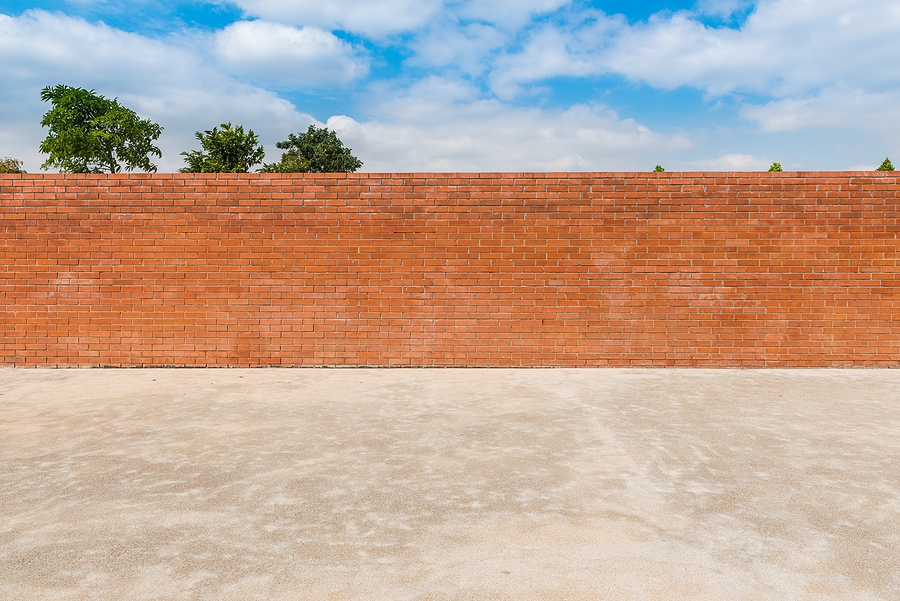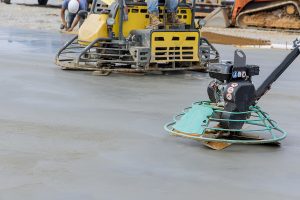A Practical Guide to Concrete Finish Types and When to Use Them
Concrete is one of the most dependable and adaptable materials in construction. But while strength and structure are important, the surface finish plays a huge role in how the concrete looks, feels, and functions once installed. Whether you’re working on a warehouse floor, a retail space, or a residential project, the finish you choose can impact both safety and style. If you’ve ever asked, “What are the 4 types of concrete surface finishes?”, you’re in the right place.
In this article, we’ll walk through the four most common concrete finish types, how they’re used, and what makes each one unique. We’ll also explain how concrete floor polishing fits into the picture and why it’s become one of the most popular modern finishes.
According to the official design manual from the Ohio Facilities Construction Commission, mechanically polished concrete offers design flexibility through color stains and scoring patterns, while also requiring proper protection to preserve the finish. Polished concrete surfaces are highly versatile and have longevity in various environments
Why Concrete Surface Finishes Matter
The finish on a concrete surface is more than just a design choice. It determines how the floor holds up under traffic, how easy it is to clean, how much traction it provides, and how it interacts with light and moisture. Some finishes are designed for durability, others for slip resistance, and others simply to elevate the appearance of a space.
Selecting the right finish depends on the environment, the intended use of the surface, and your maintenance expectations. A warehouse floor that sees forklift traffic will need a different approach than a polished concrete floor in a showroom or office.
Troweled Finish: Smooth, Functional, and Traditional
A troweled finish is probably the most basic and familiar type of concrete surface. After the concrete is poured and leveled, a hand or power trowel is used to smooth the surface. The result is a dense, flat surface that’s widely used in garages, warehouses, basements, and unfinished commercial spaces.
This type of finish offers a clean and simple look. It’s often used as a base layer for other treatments like epoxy coatings. While it’s easy to maintain and economical, a troweled finish can become slippery when wet and tends to show imperfections more than textured surfaces. That’s why it’s not ideal in areas that require added traction or a high-end decorative appearance.
Broom Finish: Simple and Slip-Resistant
A broom finish is commonly used for outdoor concrete, such as sidewalks, driveways, ramps, and loading areas. After the concrete has been smoothed with a trowel, a broom is dragged across the surface before it fully sets. This leaves behind fine grooves that create texture and improve traction.
This finish is popular because it’s straightforward to apply and helps reduce the risk of slipping, especially in wet conditions. While it’s not a decorative option, it’s one of the most practical and widely used concrete finish types for exterior surfaces. It’s especially effective in areas exposed to rain or foot traffic where safety is a concern.
Exposed Aggregate: Textured and Decorative
An exposed aggregate finish takes things a step further in both function and appearance. During the concrete pour, a specific mix of stones or pebbles is included in the batch. After the surface is leveled and partially cured, the top layer of cement paste is removed to expose the decorative stones underneath.
This finish creates a unique, natural texture that adds both visual interest and excellent slip resistance. It’s a common choice for patios, walkways, pool decks, and public plazas. The stones can be chosen in different sizes and colors, offering a range of custom design possibilities.
While attractive and durable, exposed aggregate surfaces can be rough on bare feet and may require sealing to resist stains. However, when installed correctly, they hold up well to weather and traffic over time and offer a great balance of beauty and function.
Polished Concrete: Sleek, Modern, and Low-Maintenance
Of all the finishes available today, concrete floor polishing is one of the most advanced and desirable options. Polished concrete is created by mechanically grinding the surface of the slab using diamond abrasives, gradually refining it to achieve a smooth, glossy sheen. Depending on how much it’s polished, you can achieve anything from a satin-like finish to a high-gloss mirror effect.
Polished concrete is known for its durability and resistance to stains, scratches, and moisture. It’s also incredibly low-maintenance, requiring only regular dust mopping and occasional wet cleaning. This makes it ideal for commercial spaces, offices, showrooms, and even residential interiors.
In addition to performance, polished concrete offers significant design versatility. It can be stained, dyed, or enhanced with saw-cut patterns and embedded logos. Its high reflectivity can also help reduce lighting costs, especially in large indoor areas. It’s easy to see why it’s quickly becoming one of the most requested concrete finish types in both new construction and renovation projects.
Which Finish Is Right for You?
Now that we’ve answered “What are the 4 types of concrete surface finishes?”, it’s important to understand how each fits into a specific setting. If you’re working on an outdoor walkway, a broom finish is probably your best bet. For decorative outdoor areas, exposed aggregate may offer the look and feel you want. If you’re designing an interior commercial or high-end space, polished concrete may be the perfect solution.
For functional or industrial floors that will be coated with epoxy, a basic troweled finish provides a great starting point. Many industrial floors begin with troweling and end with coatings or polishing, depending on use.
Every finish has a purpose. The key is matching that purpose to your performance needs and your design vision.
Why Surface Prep Is Just as Important
No matter which finish you choose, the final result depends heavily on surface preparation. This is especially true for polished concrete or any floor that will be coated with epoxy or a sealer. The underlying concrete must be clean, level, and free of imperfections before it can hold up under pressure.
That’s where concrete floor polishing and surface grinding come into play. Professional prep ensures proper bonding, uniform finish, and long-term durability. Skipping this step can lead to delamination, cracking, or a finish that wears unevenly.
At Custom Concrete Prep & Polish, we understand that great results start with great prep. That’s why we handle every project with precision from start to finish.
Concrete That Works as Hard as You Do
Concrete may be tough, but it’s the finish that makes it truly shine—or grip, or resist, or protect. Whether you need a simple slip-resistant surface or a high-end polished floor that turns heads, understanding the four main types of concrete finishes helps you make a smart, informed choice.
A good floor should fit the way you live, work, or welcome guests. And with the right concrete finish, it can do just that, while staying strong for years to come.
Ready to Upgrade Your Concrete Floor?
At Custom Concrete Prep & Polish, we specialize in concrete floor polishing, surface preparation, and custom finishing solutions for commercial, industrial, and residential projects. Whether you’re building new or restoring an existing floor, we’re here to help you choose the best finish for your needs and answer the question: What are the 4 types of concrete surface finishes.
Click here to schedule your free consultation today. Let’s turn your concrete into something that’s built to perform—and built to impress.



